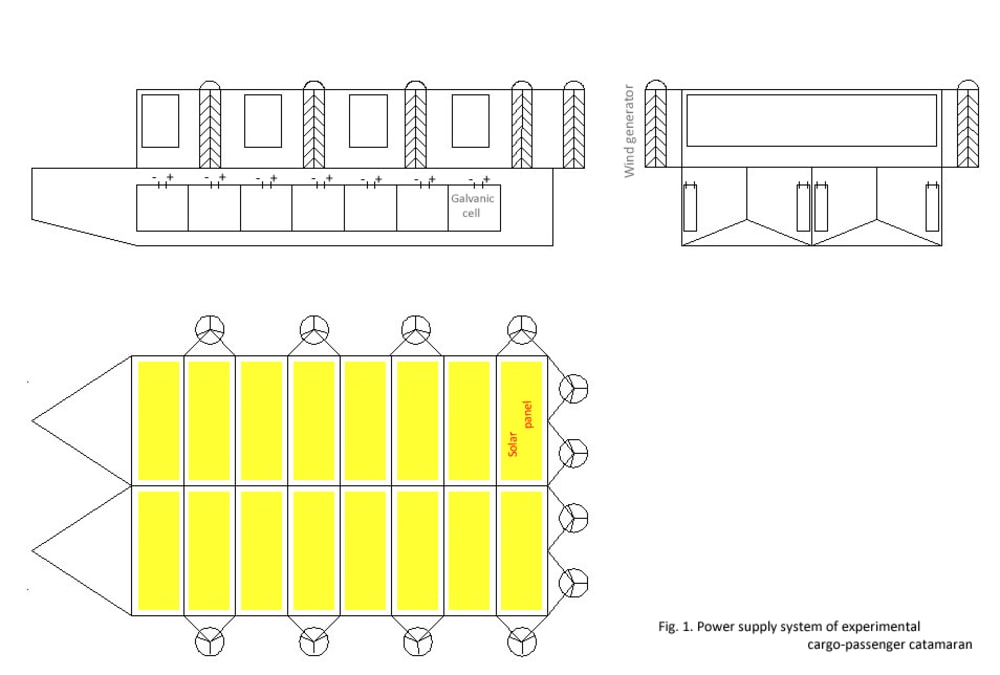The technical solution refers to the device of the catamaran, which allows, due to the energy of the sun, wind, and chemical energy, to move cargo and passengers during sea transportation.
The main elements of the catamaran construction include: (1) two hulls connected on top by a deck-type bridge (2) felling, to accommodate a crew and passengers with a total of up to 12 people (3) a power supply system with three power sources (4) two electric motors, installed in the rear of each body of the catamaran, to ensure catamaran’s propulsion and maneuvering.
The ship's power supply system consists of (1) solar panels, (2) wind generators (3) galvanic cells, (4) two batteries (not shown in the figure).
Solar panels are installed on the upper deck of the ship and are connected together. The wind generator consists of: a wind turbine rotated by vertical blades and an electric generator. Each wind turbine in the upper part is connected to an electric power generator. Wind turbines are installed along the left and starboard sides of the ship, as well as on the back board, and are connected together. Each wind generator is inside the casing with guiding plates to create high efficiency (the shrouds in the figure are not shown).
The galvanic cell hereinafter referred to as GC consists of copper and zinc plates immersed in a solution of salt water. GCs are isolated from each other, but connected to each other in a group, each of them is a long rectangle, installed horizontally inside and along the length of 2 sides of each body.
There are a the total of 4 GC groups on the vessel, which are connected to each other. GC are used if there is no power from solar panels or wind turbines (if it’s cloudy or there’s no wind). If the GC is needed to power the vessel, the GC is flooded with seawater, if the GC is not required (there is sun or wind), seawater is drained from the GC.
All three power sources: solar panels, wind generators and GE are connected to two batteries installed one in each housing. One battery feeds one electric motor.
Technical characteristics of the vessel:
- length: 10 meters;
- width: 5 meters (one body width 2.5 meters);
- height: 3 meters;
- deadweight: 5 t.
The can be dismantled (2 hulls, a cabin, a power supply system, two electric motors), for transportation in 4 standard 40-foot containers. The estimated speed of the vessel is up to 5 knots per hour (up to 10 km/h). The catamaran will allow you to transport cargo and passengers on the sea without using hydrocarbon fuel to power the vehicle's engine.
Like this entry?
-
About the Entrant
- Name:Viacheslav Yushchenko
- Type of entry:individual
- Patent status:none








